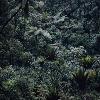Amina Mwende had always felt the pulse of her homeland through color. Born and raised in Nairobi, Kenya, she turned city walls into living canvases, murals of Maasai warriors walking alongside urban street dancers, landscapes of savannahs stretching into concrete jungles. Her art was her voice, a loud and vibrant declaration of identity.
When she received the invitation to showcase her work at an international art festival in Seoul, she felt a mix of excitement and anxiety. Asia was a world she knew only through film and the occasional Instagram scroll. But something in her stirred - the same curiosity that made her paint until dawn. She accepted the offer without hesitation.
Jihoon Park lived in Seoul, a man of silence and ink. As a calligrapher, he believed beauty was in simplicity. His work was delicate, each brushstroke guided by centuries of Korean tradition, each word a whisper of wisdom passed down through generations. His art didn't shout - it breathed.
At the gallery, Amina's booth was an explosion of color beside Jihoon's corner of calm. At first glance, their styles seemed too different - her murals bursting with energy, his scrolls meditative and still. But Jihoon couldn't look away. There was something about her work that reminded him of rhythm, of life itself.
Amina noticed him too - the young man with inky fingers and a quiet gaze. He approached her on the second day, his English careful but kind.
"Your art? it sings," he said.
"And yours listens," she replied, surprised by her own poetic answer.
They began spending their breaks together, walking through the gallery, discussing their inspirations. Amina told him about her village in Machakos, how the wind there whispered stories into her ears. Jihoon shared tales of his grandmother, who taught him to write Hangul with water on stone before he was even five.
One rainy afternoon, they sat side by side with a shared canvas between them. Jihoon wrote the word "??" - love - in his bold, practiced style. Amina painted around it, weaving African patterns into the letters, adding a quote in Swahili: "Upendo haufai mipaka" - Love knows no borders.
The gallery director was so moved by the piece, he made it the centerpiece of the exhibition.
Their story didn't end with the gallery. A few weeks later, Jihoon flew to Kenya. He met Amina's family, danced in the warmth of a Nairobi night, tasted ugali and sukuma wiki for the first time, and painted with local children on village walls.
Months later, Amina visited Seoul again - this time not for a show, but for the blossoms. Jihoon took her to a quiet park in Jeonju, where petals fell like whispers. Beneath a cherry tree, with ink-stained hands and a heart full of courage, he handed her a scroll.
On it were two characters in Hangul and a Swahili translation:
"Two hearts. One path."
Amina didn't speak. She just kissed him.
They didn't rush. They let time be the brush that painted their story. Over the years, they lived between continents, holding exhibitions that combined their cultures, telling the world that love - like art - is most beautiful when it's shared.
When she received the invitation to showcase her work at an international art festival in Seoul, she felt a mix of excitement and anxiety. Asia was a world she knew only through film and the occasional Instagram scroll. But something in her stirred - the same curiosity that made her paint until dawn. She accepted the offer without hesitation.
Jihoon Park lived in Seoul, a man of silence and ink. As a calligrapher, he believed beauty was in simplicity. His work was delicate, each brushstroke guided by centuries of Korean tradition, each word a whisper of wisdom passed down through generations. His art didn't shout - it breathed.
At the gallery, Amina's booth was an explosion of color beside Jihoon's corner of calm. At first glance, their styles seemed too different - her murals bursting with energy, his scrolls meditative and still. But Jihoon couldn't look away. There was something about her work that reminded him of rhythm, of life itself.
Amina noticed him too - the young man with inky fingers and a quiet gaze. He approached her on the second day, his English careful but kind.
"Your art? it sings," he said.
"And yours listens," she replied, surprised by her own poetic answer.
They began spending their breaks together, walking through the gallery, discussing their inspirations. Amina told him about her village in Machakos, how the wind there whispered stories into her ears. Jihoon shared tales of his grandmother, who taught him to write Hangul with water on stone before he was even five.
One rainy afternoon, they sat side by side with a shared canvas between them. Jihoon wrote the word "??" - love - in his bold, practiced style. Amina painted around it, weaving African patterns into the letters, adding a quote in Swahili: "Upendo haufai mipaka" - Love knows no borders.
The gallery director was so moved by the piece, he made it the centerpiece of the exhibition.
Their story didn't end with the gallery. A few weeks later, Jihoon flew to Kenya. He met Amina's family, danced in the warmth of a Nairobi night, tasted ugali and sukuma wiki for the first time, and painted with local children on village walls.
Months later, Amina visited Seoul again - this time not for a show, but for the blossoms. Jihoon took her to a quiet park in Jeonju, where petals fell like whispers. Beneath a cherry tree, with ink-stained hands and a heart full of courage, he handed her a scroll.
On it were two characters in Hangul and a Swahili translation:
"Two hearts. One path."
Amina didn't speak. She just kissed him.
They didn't rush. They let time be the brush that painted their story. Over the years, they lived between continents, holding exhibitions that combined their cultures, telling the world that love - like art - is most beautiful when it's shared.






